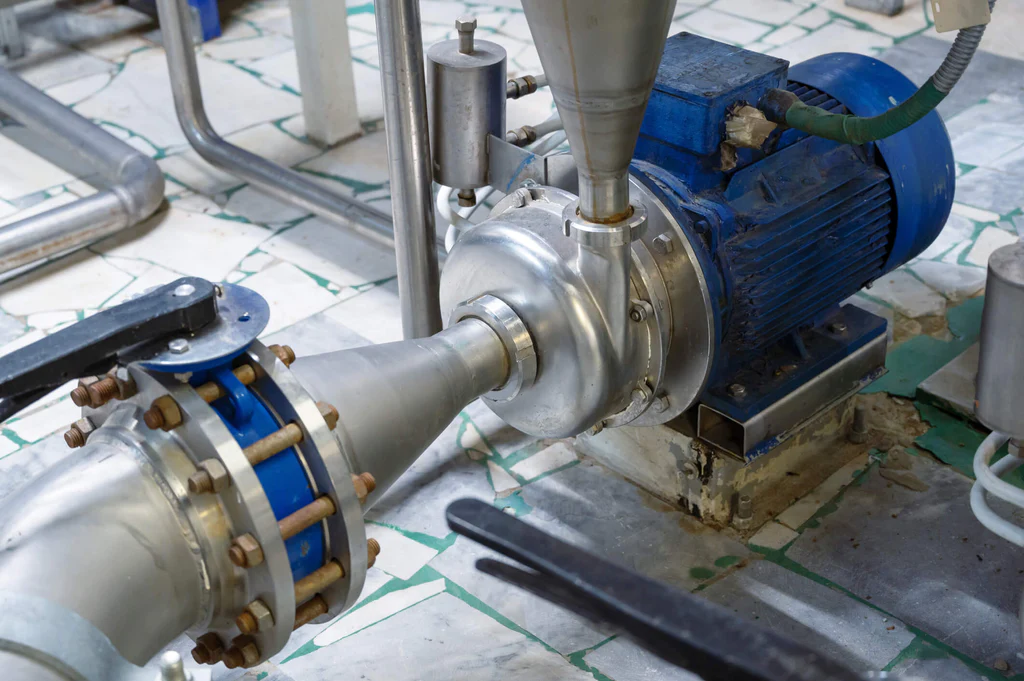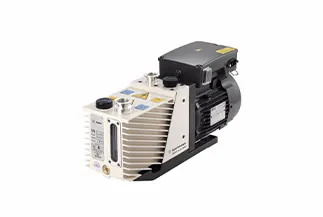Product Description
Product Description
China Lab Oil Vacuum pump Two-stage rotary vane workshop Vacuum pump Mechanical pump Electric suction pump VRD series
It is mainly used in medicinal products analysis , industry of fine chemicals , biochemical pharmacy , food examination , The criminal investigation technology , etc . It is used with the precision chromatography instrument , the necessary of laboratory . This product is specially designed for laboratory , reliable and easy to use .
APPLICATION:rotary evaporator/ glass reactor / vacuum filter / distillation
Product Parameters
| MODEL | VRD-8 | VRD-16 | VRD-24 | VRD-30 | VRD-48 | VRD-65 | |
| Displacement speed m3/h (L/s) |
50Hz | 8 (2.2) | 16 (4.4) | 24 (6.6) | 30 (8.3) | 48 (13.3) | 65 (18) |
| 60Hz | 9.6 (2.6) | 19.2 (5.2) | 28.8 (7.9) | 36 (9.9) | 57.6 (16) | 78 (21.6) | |
| Ultimate partial pressure gas ballast closed (Pa) | 5×10-2 | 4×10-2 | 4×10-2 | 4×10-2 | 4×10-2 | 4×10-2 | |
| Ultimate total pressure gas ballast closed (Pa) | 5×10-1 | 4×10-1 | 4×10-1 | 4×10-1 | 4×10-1 | 4×10-1 | |
| Ultimate total pressure gas ballast open (Pa) | 3 | 8×10-1 | 8×10-1 | 8×10-1 | 8×10-1 | 8×10-1 | |
| power supply | Single/Three phase | Single/Three phase | Single/Three phase | Single/Three phase | Three phase | Three phase | |
| Power rating (kW) | 0.4/0.37 | 0.75/0.55 | 1.1/0.75 | 1.1 | 1.5 | 2.2 | |
| Intake and exhaust DN (mm) | KF16/25 | KF25 | KF25/40 | KF25/40 | KF40 | KF40 | |
| Oil capacity (L) | 0.6~1.0 | 0.9~1.5 | 1.3~2.0 | 1.3~2.0 | 3.3~4.5 | 3.3~4.5 | |
| Motor speed (rpm) | 50Hz | 1440 | 1440 | 1440 | 1440 | 1440 | 1440 |
| 60Hz | 1720 | 1720 | 1720 | 1720 | 1720 | 1720 | |
| Ambient temperature (°C) | 5 – 40 | 5 – 40 | 5 – 40 | 5 – 40 | 5 – 40 | 5 – 40 | |
| Noise level (dB) | ≤56 | ≤58 | ≤58 | ≤58 | ≤62 | ≤62 | |
| Net weight (kg) | 20 | 33 | 35 | 37 | 62 | 65 | |
Detailed Photos
1.Two-Shift adjustable gas ballast valve satisfies different requirements of condensable vapor(such as water vapor) to be exhausted out of pump in different processes.
2.Dual protection of oil anti-sucking back ensures vacuum system from oil pollution when pump stops running and needs to be easily restarted.
3.Forced oil circulation system consisted of oil pump and constant pressure oil supply mechanism ensures stable running of the pump.
4. Less components are used, easy to maintain and repair.
Company Profile
/* January 22, 2571 19:08:37 */!function(){function s(e,r){var a,o={};try{e&&e.split(“,”).forEach(function(e,t){e&&(a=e.match(/(.*?):(.*)$/))&&1
| Oil or Not: | Oil |
|---|---|
| Structure: | Rotary Vacuum Pump |
| Exhauster Method: | Positive Displacement Pump |
| Vacuum Degree: | Low Vacuum |
| Work Function: | Maintain the Pump |
| Working Conditions: | Oil Pump |
| Customization: |
Available
|
|
|---|

Can Rotary Vane Pumps Handle Corrosive Gases or Vapors?
Rotary vane pumps are generally not suitable for handling corrosive gases or vapors due to their construction and materials. Here’s a detailed explanation:
– Construction: Rotary vane pumps consist of a rotor with vanes that slide in and out of slots within the rotor. The pumping chamber is sealed by these vanes, creating the necessary vacuum or pressure. The internal components of rotary vane pumps are typically made of materials such as cast iron, steel, or aluminum. While these materials are suitable for many applications, they may not withstand the corrosive effects of certain gases or vapors.
– Corrosion Concerns: Corrosive gases or vapors can react with the internal components of the pump, leading to material degradation, erosion, or chemical reactions. This can result in the formation of deposits, pitting, or damage to the pump’s surfaces. Corrosion can compromise the pump’s performance, efficiency, and longevity. In some cases, it can also introduce contaminants into the pumped medium, affecting the quality of the process or downstream equipment.
– Material Compatibility: The compatibility of the pump’s internal materials with the corrosive gases or vapors is a critical consideration. Many corrosive gases or vapors require specialized materials such as stainless steel, Hastelloy, or other corrosion-resistant alloys to withstand their effects. Rotary vane pumps typically do not have internal components made from these materials, making them unsuitable for handling corrosive substances.
– Alternative Solutions: If corrosive gases or vapors need to be handled, alternative pump technologies specifically designed for such applications may be more appropriate. For example, chemical-resistant pumps made from materials compatible with the corrosive substances, such as diaphragm pumps, magnetic drive pumps, or certain types of centrifugal pumps, are commonly used. These pumps incorporate corrosion-resistant materials and specialized sealing mechanisms to ensure safe and reliable operation.
– Protective Measures: In some cases, it may be possible to use rotary vane pumps for applications involving mildly corrosive gases or vapors by implementing protective measures. This can include installing chemical traps or filters in the pump system to remove or neutralize corrosive substances before they reach the pump. However, the effectiveness and feasibility of such measures depend on the specific application and the level of corrosion resistance required.
It’s important to consult with pump manufacturers or industry experts to determine the most suitable pump technology for handling corrosive gases or vapors. They can provide guidance on selecting the appropriate pump materials and design to ensure safe and efficient operation in corrosive environments.
Overall, while rotary vane pumps offer many advantages in various applications, they are generally not recommended for handling corrosive gases or vapors due to the potential for material damage and performance degradation. Using pumps specifically designed for corrosive applications is crucial to maintain operational integrity and prevent costly failures.

What Are the Main Components of a Rotary Vane Pump?
A rotary vane pump consists of several key components that work together to create a pumping action. Here’s a detailed explanation of the main components:
– Rotor: The rotor is the central rotating element of the rotary vane pump. It is typically made of a durable material such as stainless steel or cast iron. The rotor is connected to a drive mechanism, such as an electric motor, which provides the rotational power.
– Vanes: The vanes are sliding elements that are inserted into radial slots in the rotor. They can be made of various materials, including carbon, graphite, or synthetic materials. The number of vanes in a rotary vane pump can vary, but typically there are multiple vanes evenly spaced around the rotor. The vanes are crucial for creating a seal against the stator walls and for generating the pumping action.
– Stator: The stator is the stationary part of the rotary vane pump. It forms the pump chamber and provides the housing for the rotor and vanes. The stator is typically cylindrical in shape with an eccentric bore that accommodates the rotor. It is commonly made of materials such as cast iron or stainless steel to ensure durability and resistance to wear.
– Inlet and Outlet Ports: The rotary vane pump has separate inlet and outlet ports. The inlet port allows the entry of gas or fluid into the pump, while the outlet port facilitates the discharge of the pumped medium. These ports are strategically positioned on the pump housing to enable the flow of the medium in and out of the pump.
– Seals: Seals are essential components of a rotary vane pump as they prevent leakage and maintain the integrity of the pumping system. The primary seal is formed between the vanes and the stator walls, ensuring that gas or fluid is contained within the pump chamber during the pumping process. Additional seals may be present at the inlet and outlet ports to prevent any leakage at these points.
– Lubrication System: Rotary vane pumps often require lubrication to minimize friction and wear between the rotating components. Lubrication is typically achieved by introducing a small amount of oil or lubricant into the pump chamber. The lubricant helps reduce friction between the vanes and the stator walls, ensuring smooth operation and extending the lifespan of the pump.
– Exhaust Valve: Some rotary vane pumps feature an exhaust valve, also known as an anti-suckback valve. This valve is located at the outlet port and prevents the reverse flow of gas or fluid back into the pump when it is not in operation. The exhaust valve helps maintain the integrity of the vacuum or pressure created by the pump.
– Drive Mechanism: The drive mechanism provides the rotational power to the rotor, enabling the pumping action. In most cases, an electric motor is used as the drive mechanism, although other power sources such as hydraulic or pneumatic systems can also be employed.
– Base or Mounting Plate: The base or mounting plate provides a stable platform for the rotary vane pump. It is typically made of sturdy materials such as cast iron or steel and is designed to support the weight of the pump and provide a secure attachment point for installation.
– Control and Monitoring Devices (Optional): Depending on the specific application, rotary vane pumps may be equipped with control and monitoring devices. These can include pressure sensors, flow meters, temperature sensors, and control panels that allow for the regulation and monitoring of pump performance.
– Safety Features (Optional): Some rotary vane pumps may include safety features such as overpressure relief valves or automatic shutdown mechanisms to prevent damage to the pump or the system in case of abnormal operating conditions.
In summary, the main components of a rotary vane pump include the rotor, vanes, stator, inlet and outlet ports, seals, lubrication system, exhaust valve, drive mechanism, base or mounting plate, as well as optional control and monitoring devices and safety features. These components work together to create a continuous pumping action and ensure the efficient operation of the rotary vane pump.


editor by Dream 2024-04-30
by
Tags:
Leave a Reply